Swiss Meringue Buttercream
Swiss Meringue Buttercream is light and fluffy, smooth and creamy, holds shape really well and isn’t overly sweet like American buttercream. It’s everything you could want in a frosting!
Since it holds its shape really well, Swiss meringue buttercream frosting is a great option for frosting cakes or cupcake recipes! The swirls hold really well and and any piping is much easier thanks to the meringue base. Some of my favorite recipes to use with this buttercream is my Red Velvet Cake, Smash Cake, Spice Cake and Basketball Cupcakes!
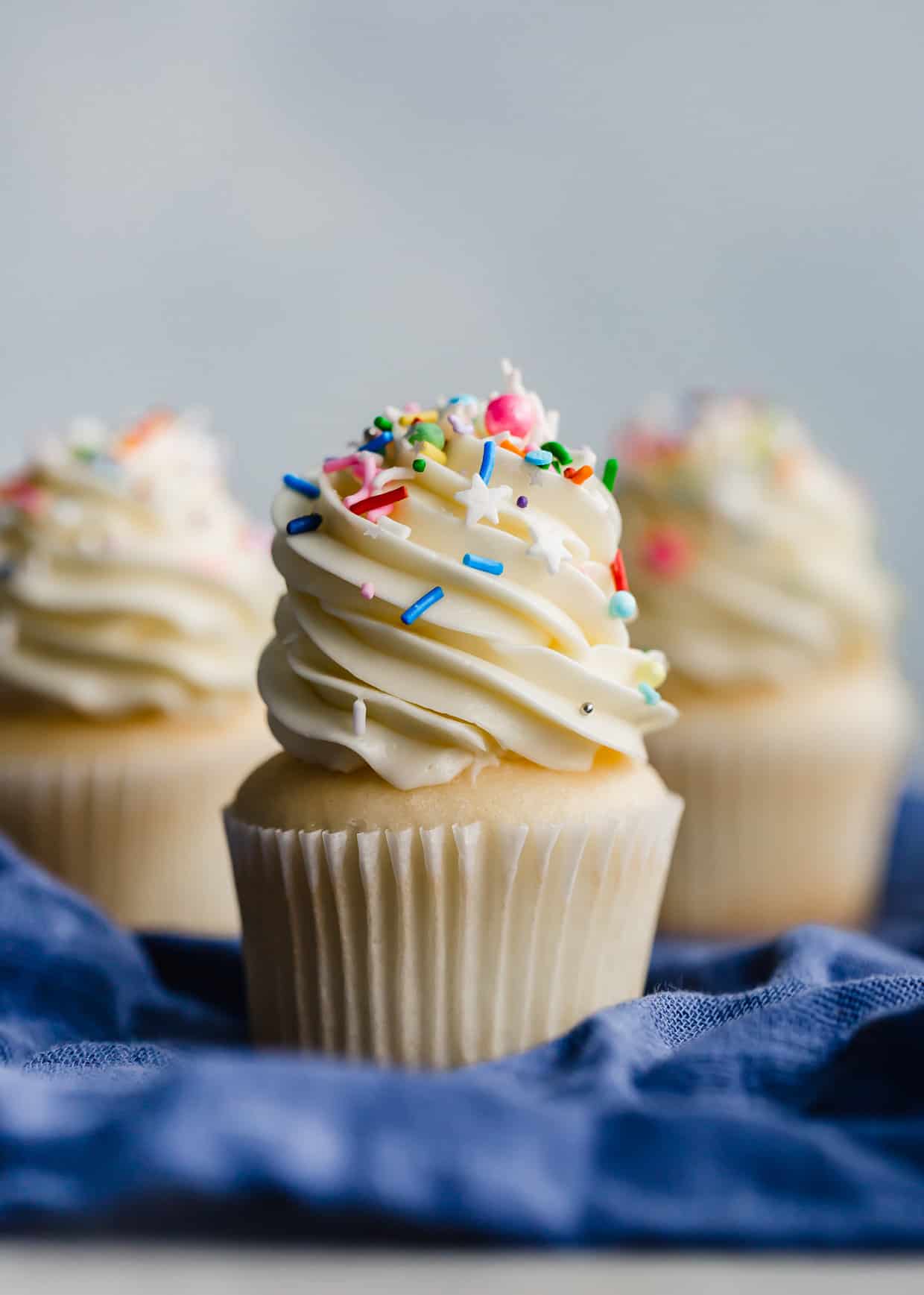
Why This Recipe Works
- Gently sweet buttercream. Some people, including me, prefer Swiss meringue over American buttercream because it isn’t as sweet. It’s got a delicious and delicate flavor with the perfect amount of sweetness that will make you want to dip your finger in the frosting bowl while not being overly sweet! As soon as I finished this recipe, I started casually swiping my finger into the frosting bowl to get a small taste. Well, 10 swipes later I decided I better hide the frosting before I ended up eating it all!
- Holds its shape. This is a great frosting for piping swirls or frosting decoration on cupcakes or cakes because it holds its shape really well! The meringue base is what gives us that beautiful structure.
- Tips and troubleshooting. This frosting recipe can be a bit overwhelming, especially if you’ve tried making it before without success. However, I’ll walk you through each part of the process step-by-step and give you tips and tricks to help get the best Swiss meringue buttercream ever!
Ingredient Notes
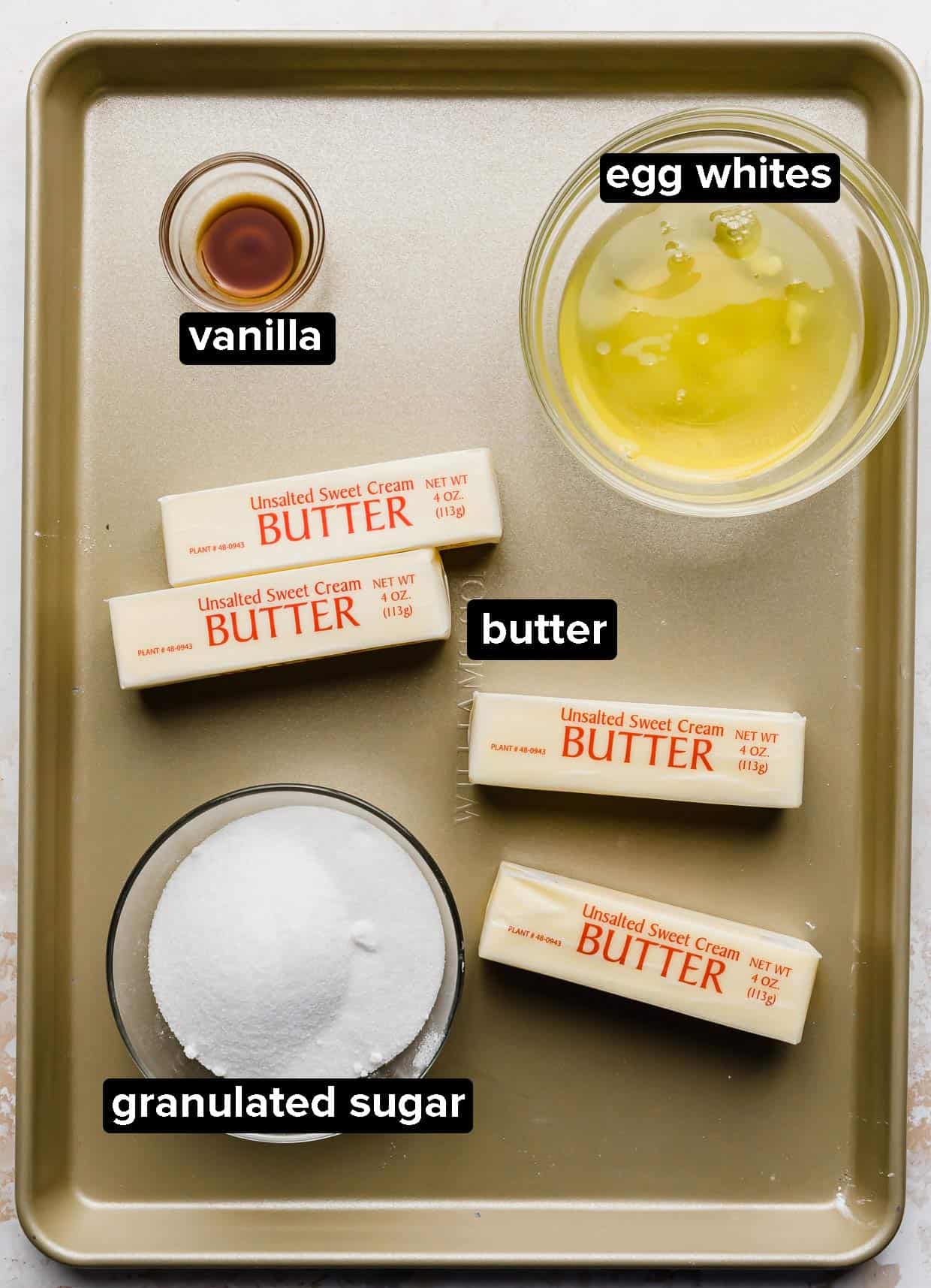
- Egg Whites: For best results, use fresh eggs instead of carton egg whites.
- Granulated Sugar: You want to use granulated sugar instead of powdered sugar. Don’t worry, the sugar granules will dissolve during the cooking process.
- Unsalted Butter: The temperature of the butter is very important. You want the butter to be at cold room temperature. What do I mean by that? It should be pliable but still cool to the touch. If your butter is too warm, you won’t achieve the correct buttercream consistency. Do not microwave to reach the right temperature. Microwaving can produce pockets of melted butter insides the butter cube.
- Vanilla: This gives flavor to the buttercream while also provides a balancing and flavor enhancing note to the buttercream (similar to salt in savory dishes).
Step-by-Step Instructions
- Whisk the egg whites and sugar until combined.
- Place the egg white + sugar mixture over a pot filled with boiling water. Heat over a double boiler. Make sure the bowl does not touch the boiling water. At this point you should be whisking the mixture constantly until no longer grainy. To check if it’s grainy, carefully dip your fingers into the meringue and rub your fingers together. You shouldn’t be able to feel any sugar granules. (Careful! It will be hot!)
- Heat until the mixture reaches 160°F. Using an instant read thermometer, heat to 160°F. This portion of the recipe requires some patience because it takes anywhere from 15-25 minutes to reach this temperature. Granted, the size of your pan and the area it’s covering on your stand mixer bowl will play a role. Once it reaches 160°F, remove the bowl from the heat and carefully wipe the steam/water from the bottom of the bowl. The mixture will be very white (like pictured below).
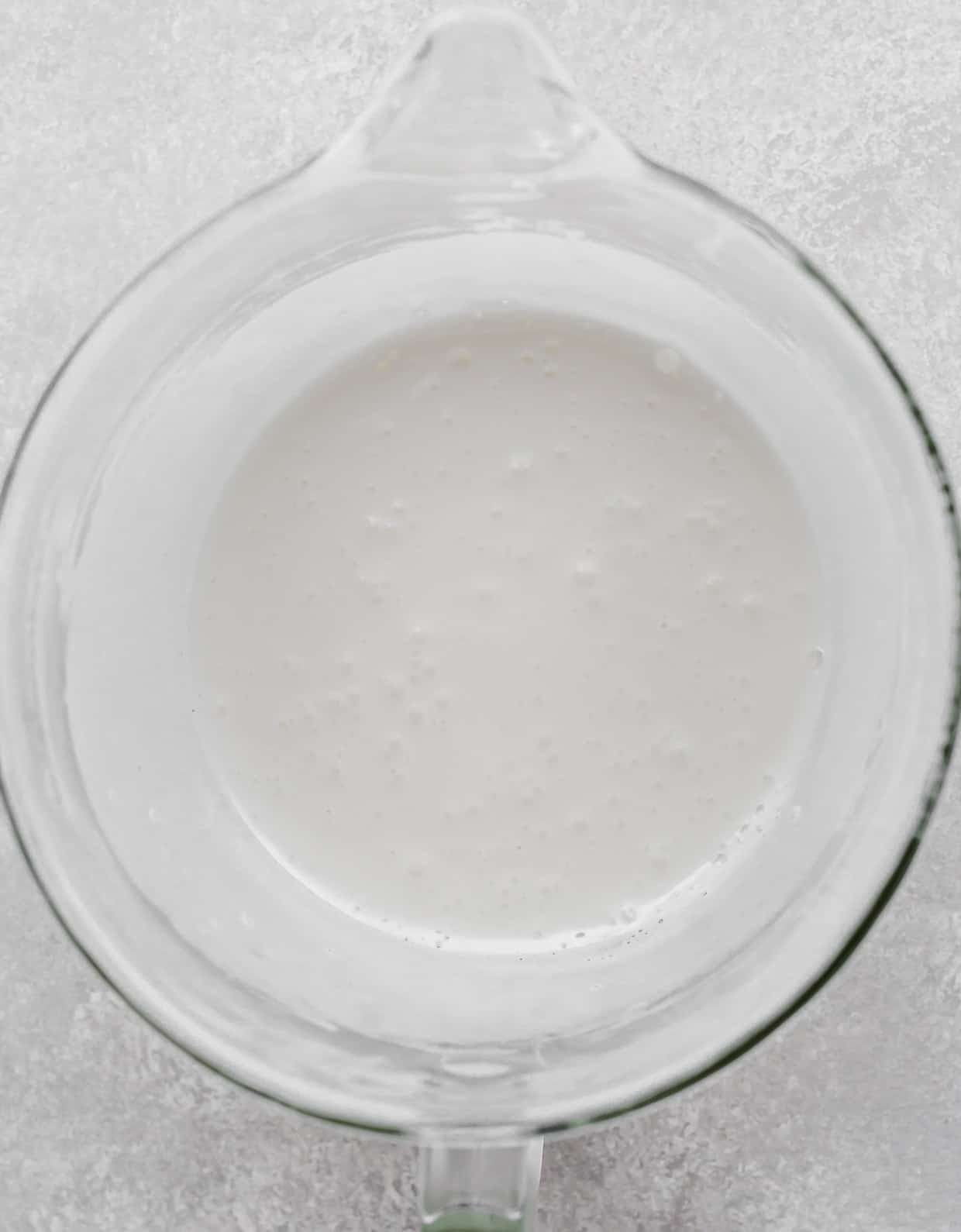
- Let cool. After heating the meringue, cover and let cool at room temperature for 10-15 minutes.
- Whip into stiff peaks. Using the whisk attachment, whip the mixture on medium high speed until the meringue is smooth, glossy, and stiff peaks have formed. This may take anywhere from 5-15 minutes.
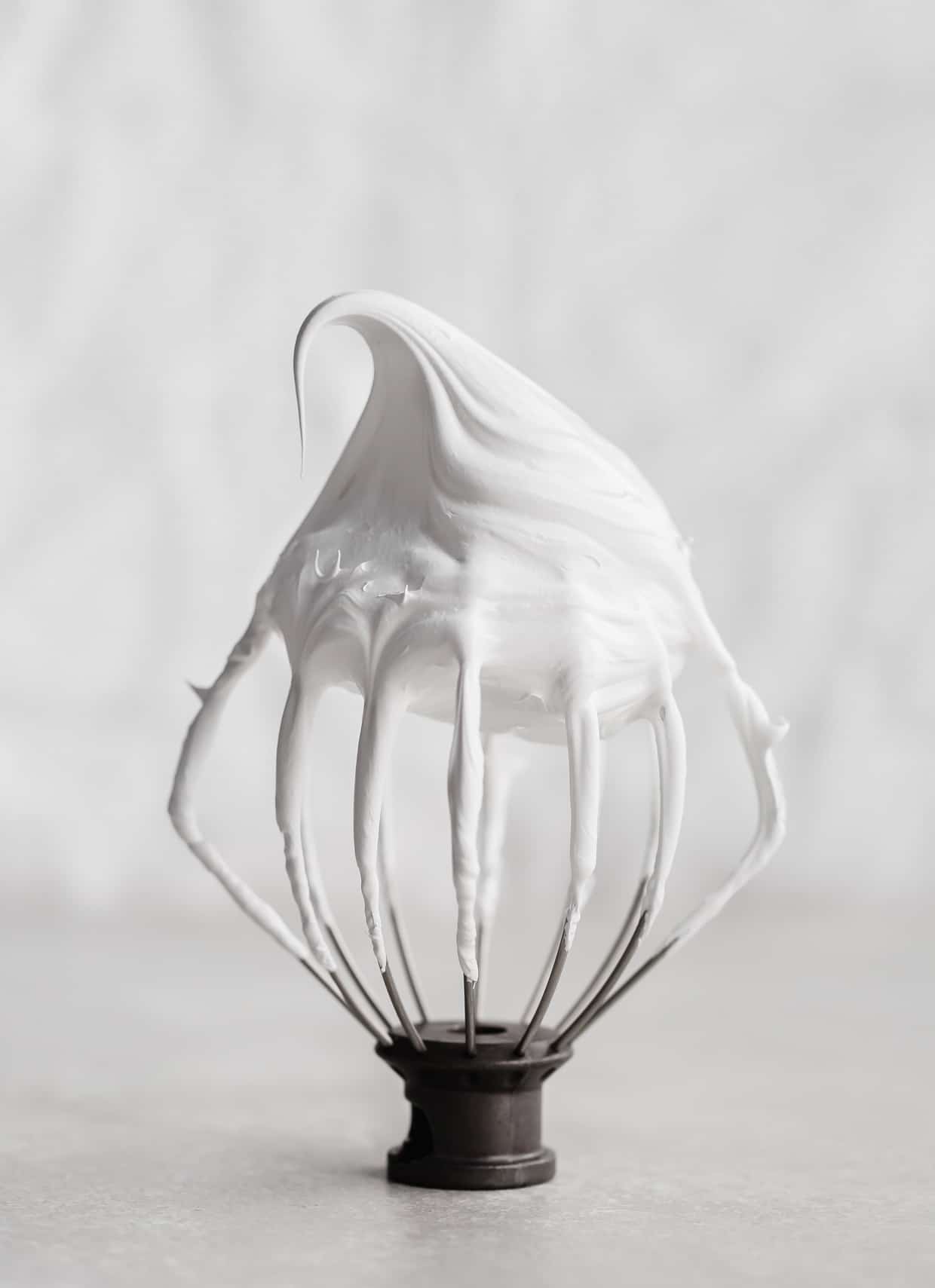
- Now for the butter. Be sure the meringue and the bowl of the stand mixer is no longer warm to the touch. You do not want to add the butter to a warm meringue because it will melt the butter. If the bowl or meringue is still warm, let cool in the fridge for 4-5 minutes. Make sure the butter is cool, too. It shouldn’t be straight from the fridge or room temperature soft (about 60°F). Change to the paddle attachment and add the butter one tablespoon at a time, waiting until the previous butter has been mixed in before adding any more.
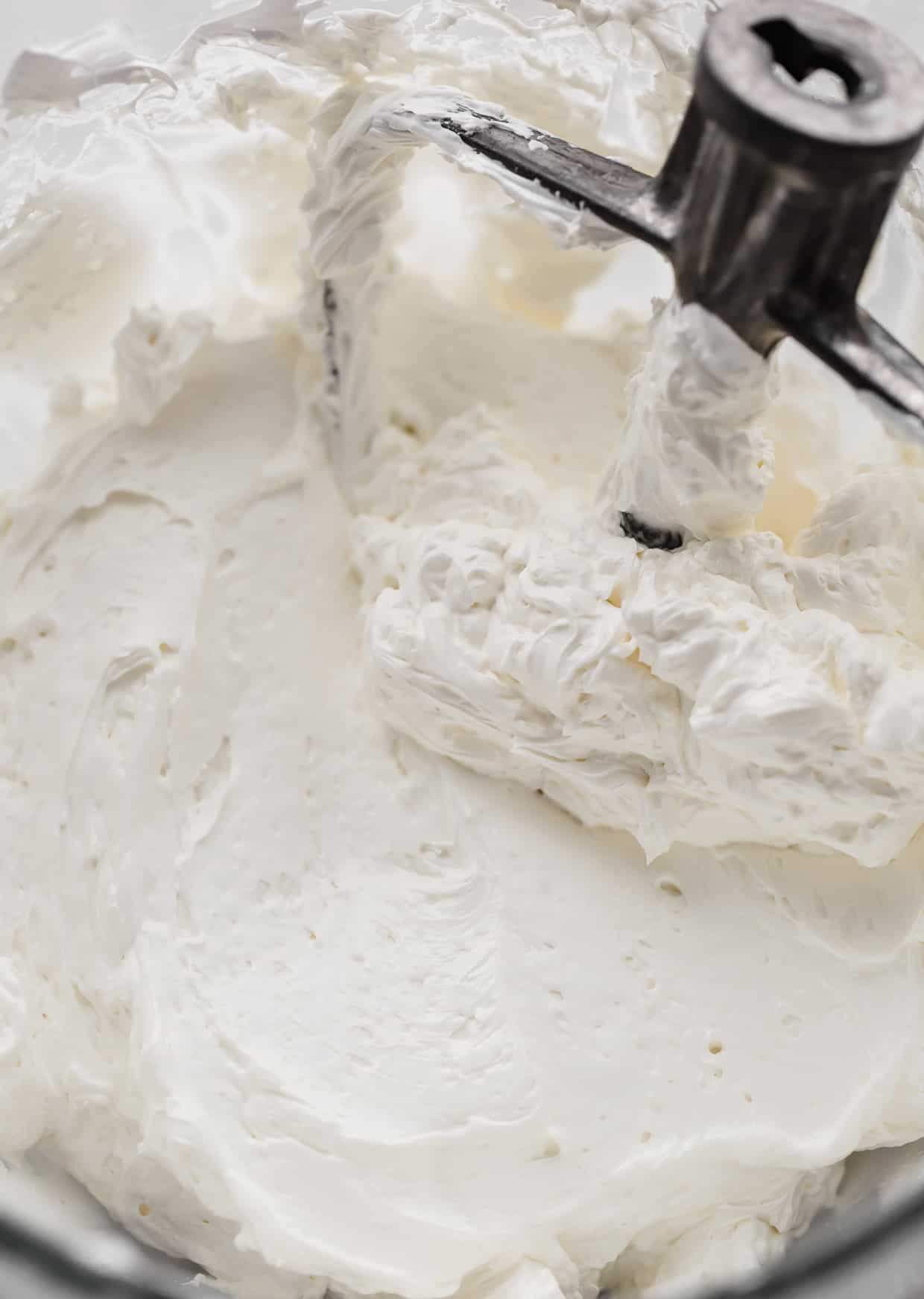
- Scrape the bowl and mix again. Once all the butter has been added, scrape down the sides of the bowl and mix on medium high speed for 2-4 minutes. The mixture will start to appear more like a frosting, rather than a glossy meringue. Add the vanilla and mix until combined.
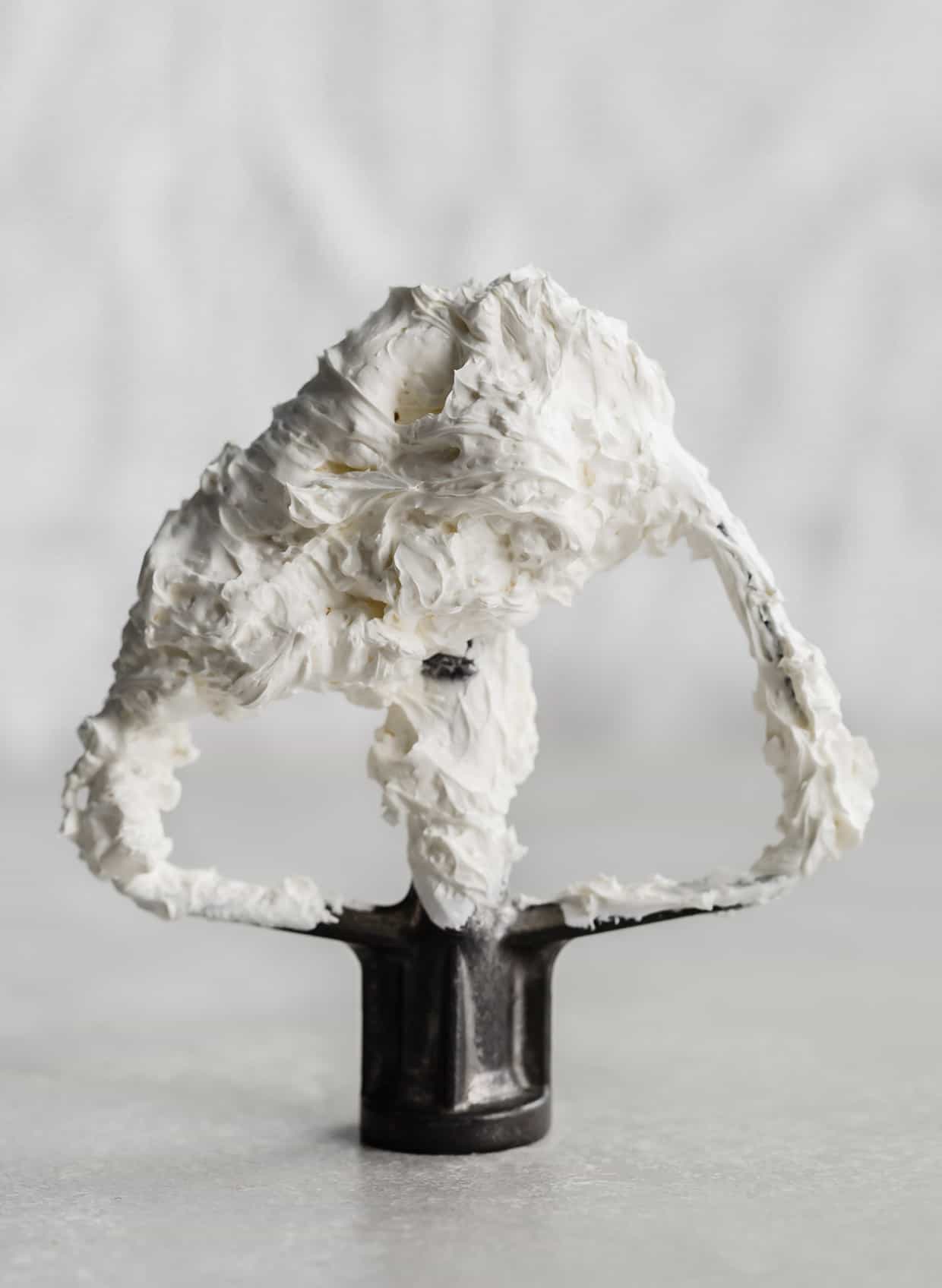
Recipe Tips
This recipe doesn’t call for salt. Some recipes do call for salt though so if you want to add a pinch you can.
The heat from the double boiler will slowly cook the egg white and sugar mixture, dissolving the sugar granules and cooking the egg whites. The mixture will thin out as it cooks because the sugar is dissolving.
If you find that more than 15 minutes have passed trying to whip the egg white and sugar mixture into stiff peaks, stop and chill the bowl for 5-10 minutes and then try whipping it again.
Serious Eats has a great article on Swiss meringue troubleshooting. Let’s go over the most common ones together:
- Runny mixture: If you find the mixture is runny, it probably means the Swiss meringue wasn’t cool enough before the butter was added. This could have caused the butter to melt, making the buttercream a bit runny. Chill the bowl in the fridge for about 20 minutes and then beat the mixture for 1-2 minutes until smooth. The buttercream should come together.
- Curdled buttercream: When combining two different temperatures, you can get some curdling. Make sure your meringue mixture is cooled to room temperature before adding the butter to prevent curdling.
- Grainy: If the buttercream is grainy, then it probably didn’t get hot enough over the stove to melt the sugar granules.
For more tips or questions, see my Recipe FAQs below.
Variations:
- Lemon Swiss meringue buttercream – Add lemon extract and fresh lemon zest to the frosting after you’ve added the butter.
- Chocolate Swiss meringue buttercream with cocoa powder – Sift in the cocoa powder and mix until combined or use melted chocolate (that has been cooled to room temperature).
- White chocolate Swiss meringue buttercream – Add melted white chocolate that’s been cooled to room temperature so that when you add it to the frosting it won’t melt the meringue or the butter.
- Freeze dried strawberry Swiss meringue buttercream – Place freeze dried fruit in a blender or food processor and grind to a fine powder. Add the fruit powder to the buttercream and beat until smooth. You can do this with any flavor of freeze dried fruit, the possibilities are endless — strawberries, raspberries, blueberries, mango etc.)
This buttercream is a bit more difficult to color than an American buttercream. You can use gel food coloring but the color may not take as well. To help, add food coloring to a tablespoon or less of the buttercream and melt that in the microwave. Let cool and mix back into the buttercream.
This recipe should frost about 24 cupcakes, give or take a few (depending on how much frosting you use) or enough to frost a 3 layer 6-inch cake or a 2 layer 8-inch cake.
Make Ahead, Storing, and Freezing
Store the buttercream at room temperature in an airtight container for up to 2 days or in the refrigerator for 2 weeks. Remove from the fridge to come to room temperature. Transfer the frosting to the bowl of your stand mixer fitted with the paddle attachment and beat on medium speed for 2-3 minutes until combined and smooth.
To freeze, store in an airtight container in the freezer for 1-2 months. Let thaw at room temperature.
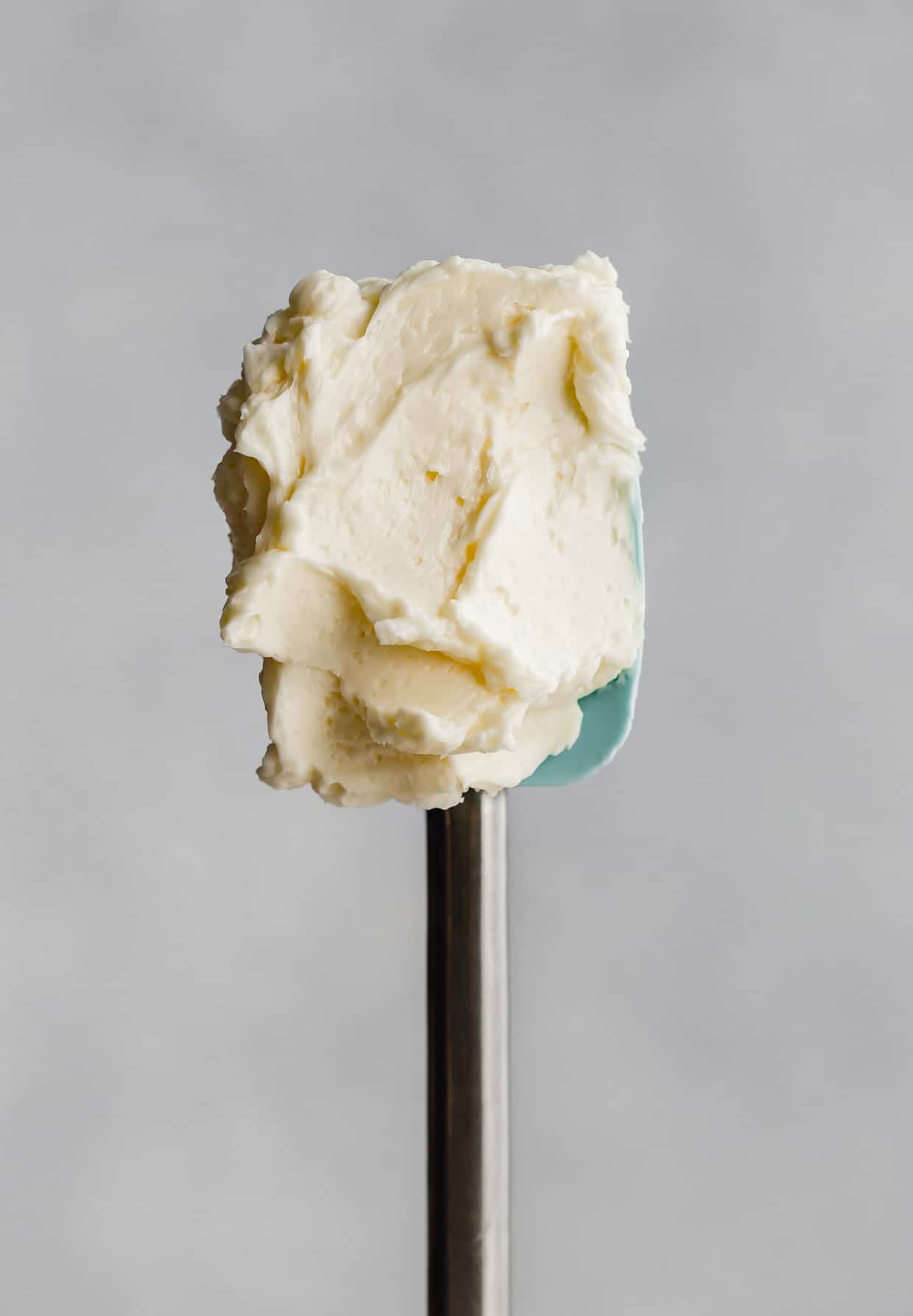
Recipe FAQs
It is a silky smooth, super creamy, and delicious frosting. It’s made by whisking egg whites and sugar over a pot of boiling water. It’s then whipped until they the mixture reaches stiff peaks. That creates the Swiss meringue! Adding unsalted butter to the Swiss meringue, a tablespoon at a time, turns the Swiss meringue into a buttercream frosting! It’s a popular frosting because it isn’t as sweet as American buttercream.
Yes, this recipe can be made using hand beaters. It will take about 25-30 minutes with a hand mixer compared to 15 minutes using a stand mixer. To save time and energy, I suggest using a stand mixer (I use a Kitchen Aid stand mixer).
If you find that your buttercream is lumpy, then it means it has curdled. Curdled buttercream happens when you add something cold to something hot or something hot to something cold. This is why it’s important that the meringue cools down enough so that when you add in the butter, it doesn’t curdle. Curdling can also happen due to over mixing.
To fix curdled buttercream, you just need to slowly and gently heat the mixture. Place the buttercream in your stand mixer bowl and put it over a steaming water bath. Let sit for 1-2 minutes or until the edges are melty; the center will still be solid and cold. Transfer the bowl to your stand mixer fitted with a whisk attachment. Beat for 4 minutes or until the mixture is homogenous. The buttercream will turn light and glossy as it reaches 72°F-74°F.
It could be because you didn’t cool the Swiss meringue enough before you beat in the butter. To solve this problem, place the buttercream in the refrigerator for 10-20 minutes or until it begins to harden slightly around the edges. The center will still be runny, but it will and come together after a few minutes of whipping.
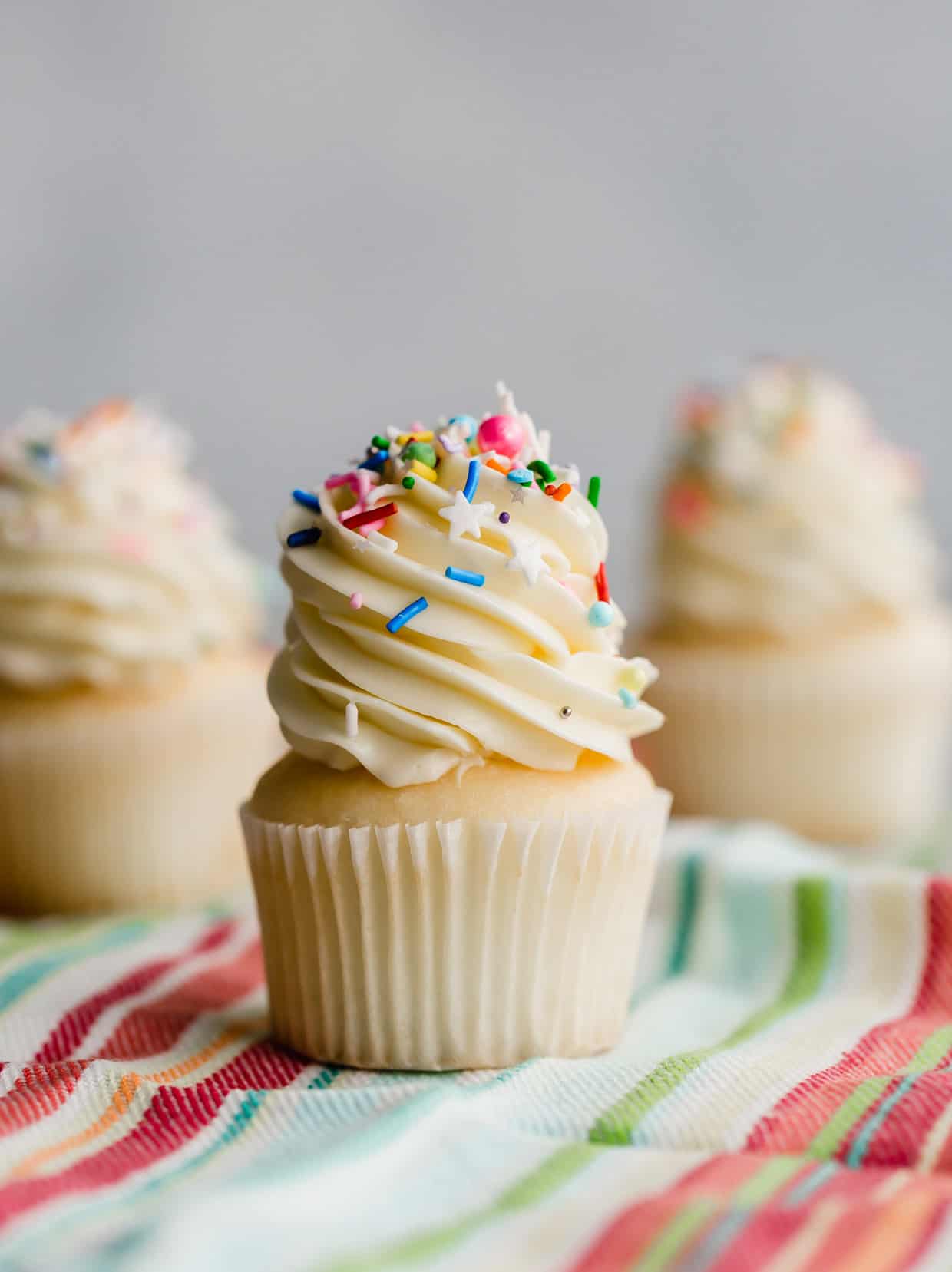
More Frosting Recipes
Did you make this recipe? I’d love to hear about it! Leave a rating and review or scroll below the recipe card and do so there.
Stay up-to-date by following us on Instagram, TikTok, Facebook, and Pinterest.
Swiss Meringue Buttercream
Ingredients
- 6 large egg whites
- 2 cups granulated sugar
- 2 cups unsalted butter - softened but still a tad firm. Cut into tablespoon increments.
- 1 teaspoon vanilla extract
Equipment
Instructions
- In a medium sized pot, bring 1-2 inches of water to a simmer.
- Thoroughly wash and dry your stand mixer bowl. We don’t want ANY grease touching the egg whites! (Makes it harder for them to whip).
- In the bowl of a stand mixer whisk the egg whites and sugar until combined.
- Place the mixing bowl over the pot of simmering water. The bowl shouldn’t be touching the water. Mix the mixture with a whisk, stirring constantly until no longer grainy (you shouldn’t feel any sugar granules when you rub the mixture between your fingers), and the mixture reads 160 °F on an instant read thermometer. (This took me about 20 minutes). Once it reaches 160°F, remove from the heat and wipe the outside of the bowl with a paper towel to remove the water.
- Cover the bowl with plastic wrap and let the mixture cool for 10-15 minutes at room temperature.
- Place the bowl on your stand mixer and (fitted with the whisk attachment) and whisk on medium high for 10-15 minutes or until the meringue is stiff and cooled. The bowl should no longer be warm to the touch. (You do not want the meringue to be warm! This will melt the butter). If the meringue is too warm, place it in the fridge for 4-5 minutes to cool down.
- Change to the paddle attachment. Add the butter, a tablespoon at a time, waiting to add each tablespoon only after the previous butter has been mixed in. Once all the butter is in, scrape down the sides of the bowl with a spatula and whip on med-high speed for 2-4 minutes until the it’s smooth and whipped. If it’s lumpy or liquidy, keep beating.
- Add the vanilla extract and beat until combined.

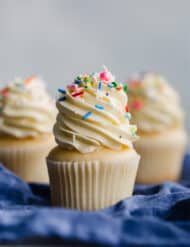
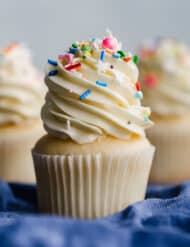
 Welcome to this delicious corner of the internet! Here I share the recipes my family loves.
Welcome to this delicious corner of the internet! Here I share the recipes my family loves.

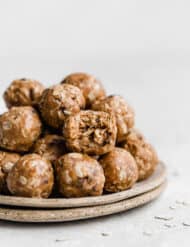
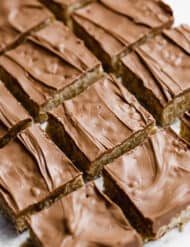
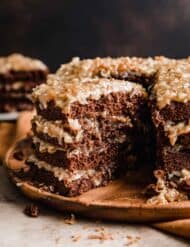
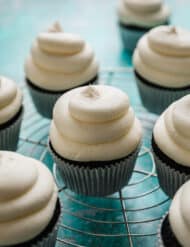
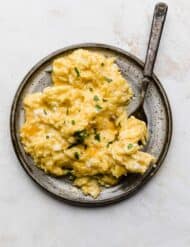
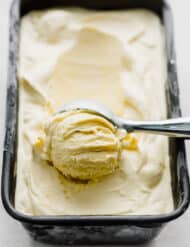
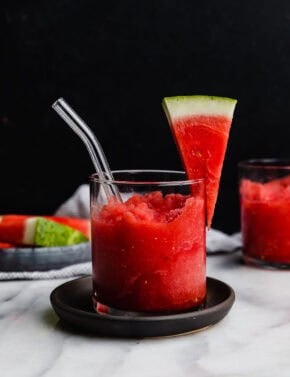
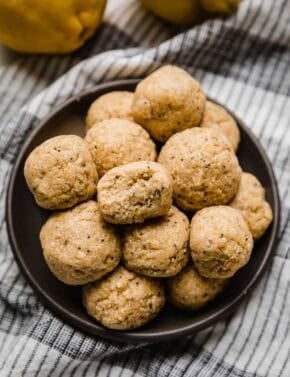
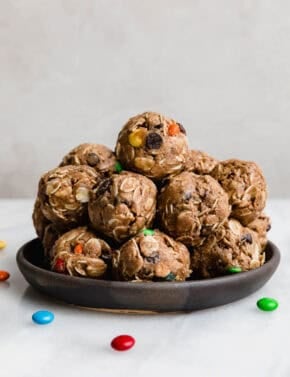

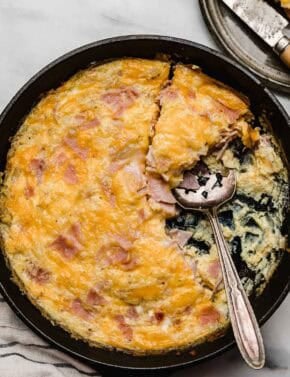


7 Comments on “Swiss Meringue Buttercream”
Hi just came to say thank you so much for sharing this recipe with great detail! I’ve baked my whole life but icing I have never nailed down. This has turned out perfect for my daughter’s first birthday and will now save forever! 🙂
So happy to hear this turned out perfectly, Amanda! Thank you. Happy belated birthday to your daughter, and cheers to many more birthdays to come with perfectly frosted cakes! 🎂
I have made several layer cakes using this frosting.. perfect sweetness level .. 100 on 10!
Been getting into cake making recently and LOVE this buttercream frosting. Thanks for a fun, easy recipe!
I’m so excited to try this! I’ve been wanting to experiment using Swiss meringue buttercream!
Would this be a good filing for French macarons?
Yes! I think it would be perfect.